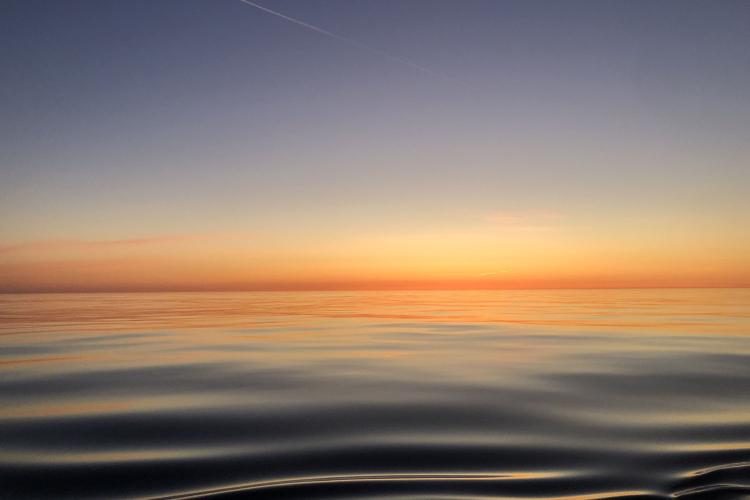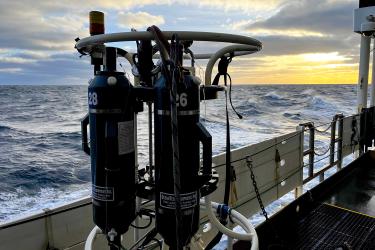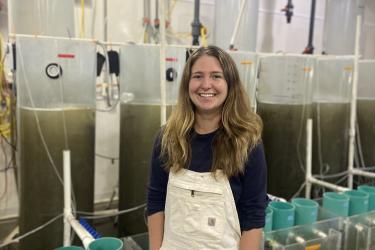We’re back for the final leg of the Northeast Fisheries Science Center sea scallop survey on the R/V Hugh Sharp. The weather was very calm at the start of the trip, and we had a beautiful sunrise for our first morning. The water was smooth and glassy, and the sky became more orange as the sun rose. It’s very tranquil and easy to lose yourself in such a moment.
The first couple of days of this 9-day leg were devoted to HabCam, a camera system that takes millions of pictures of the sea floor. HabCam requires a lot of maintenance—both just before and during the survey. Every time HabCam comes out of the water, we inspect it for damage and wear and make repairs for its next swim. There’s a lot of technical skill that goes into running this complicated piece of equipment.
I’m not involved with maintaining and running HabCam, but I do drive it! The driver’s goal is to keep HabCam 1.8 to 2 meters above the sea floor. This requires you and a copilot to monitor the radar so you can either bring in or let out wire to keep the cameras at the preferred distance from the bottom.
If we’re not helping to operate HabCam, we annotate the pictures it takes. This involves measuring scallops, identifying roundfish, flatfish, and crabs, and recording this and other information on the image. Before you can annotate official pictures, you have to complete a test set of 206 images, and this can take some time. To ease into the night shift, my shipmates and I got cozy in the lab and rotated between driving, copiloting, completing the test set and annotating.
We quickly finished using HabCam and started dredging for the rest of the trip. The work went from sitting inside and looking at a screen to moving buckets and sorting samples outside. I look forward to the latter. It’s nice to be up and moving around, especially when working at night. Being active in crisp, early morning air helps you stay awake.
It’s important to pay attention because there are a lot of interesting animals and shells in the dredge samples that can’t be seen on HabCam. The little pipefish pictured above almost escaped me! It can be tricky to catch such tiny animals when you’re sorting through a bunch of sand, stones, and mud. We didn’t find too many this trip, but they made an occasional appearance.
Overall, I think it’s important to consider these little animals, especially when we tend to focus on a single species (in this case, scallops). It’s a good reminder that the ocean is very diverse, and that all of its animals have intrinsic value beyond our desire to eat them or not.






